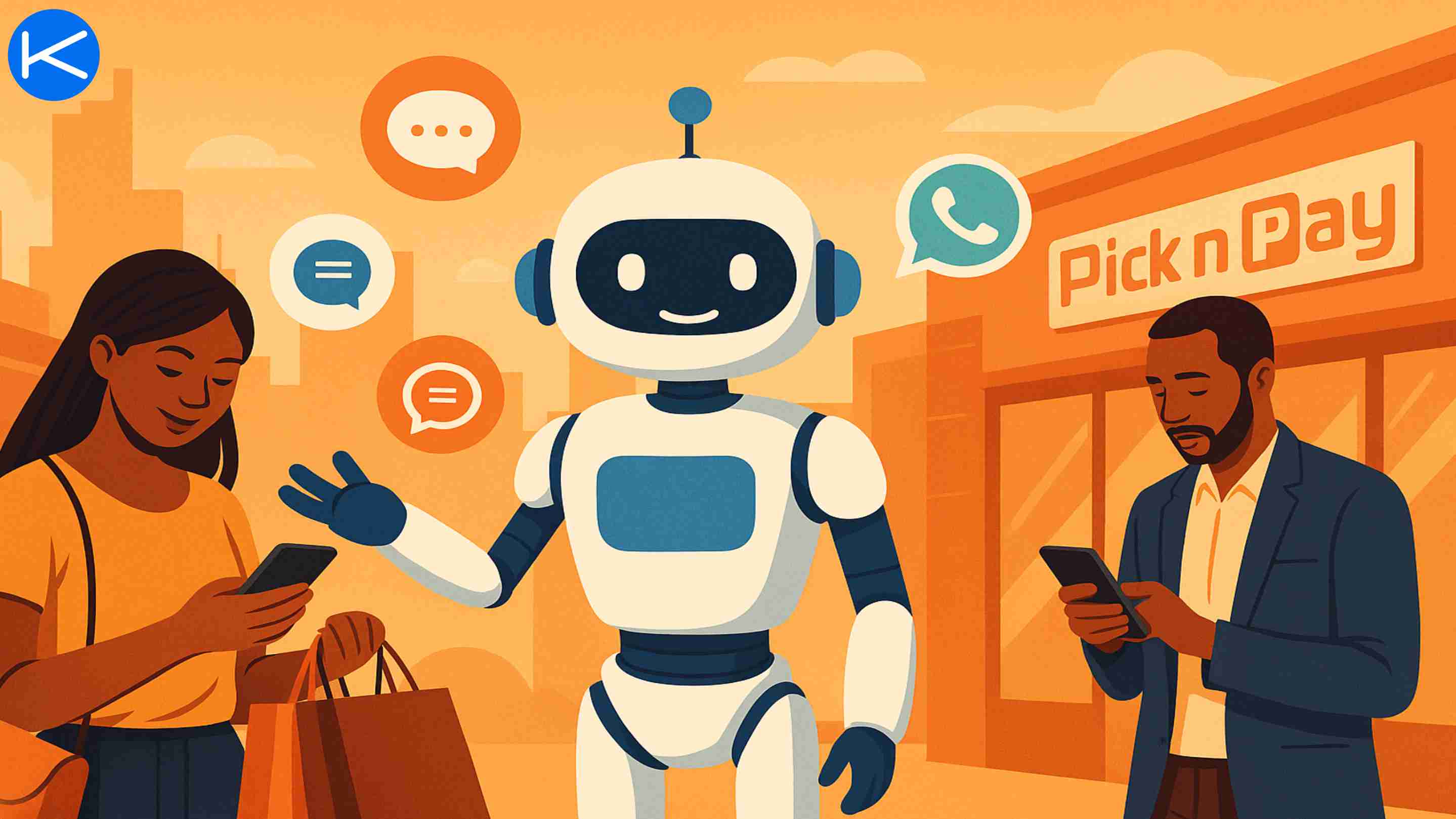Lethabo Moroka
1 year
Read This Before You Implement AI Chatbots! 😱🤖AI Chatbot Risks and Dark Theories Unveiled
Ever felt like your chatbot is a bit too smart for its own good? Well, you might be onto something.😨 In this blog, we're diving into the eerie world of AI chatbots. Are they just helpful assistants, or are they up to something more sinister? We’ll explore some wild theories and real risks that come with using chatbots. From data harvesting to spooky blackbox designs, we've got it all covered. So, before you let these digital buddies into your life, read on and find out what you really need to know!🕵️♂️🔍
- We will focus on the following dark theories:
Data Harversting - Tracking and Surveillance
- Data Security
- Transparency
- Blackbox design
So, hold on tight as we explore whether these digital assistants are friend or foe. 🕵️♀️👀
#1: Data Harvesting

Dark Theory: Are Chatbots Spying on Us? 👁️
Some believe that chatbots might be gathering your data not just for improving services, but to sell to the highest bidder. Whispers suggest that AI's ability to make predictions without explaining the why behind them fuels theories that these bots could be used for more sinister purposes. Could it be that your chatbot is silently watching and recording everything you do? 😱
There are also reports that chatbots can be tricked into misbehaving, highlighting the risks of data leaks and manipulation. Are these digital assistants really safe, or are they potential spies in your home and office? 🏠🕵️
What is Data Harvesting? Data harvesting sounds like something out of a sci-fi movie, but it's very real. It's when chatbots gather information from every interaction you have with them. This can include everything from your name and email address to your shopping habits and personal preferences.
How Chatbots Collect Data 📊 Every time you chat with a bot, it’s scooping up data. This can be direct information you provide, like answers to questions, or indirect information, like the time of day you’re most active. These little bits of data are collected and stored, creating a digital profile of you. Creepy, right? 😬
#2: Tracking and Surveillance

Dark Theory: Big Brother is Watching Through Chatbots 📹
Others believe that these friendly digital assistants are actually tools for mass surveillance. The algorithms behind AI chatbots can predict outcomes but can't explain their processes, creating a perfect environment for secret monitoring. 😳
Moreover, chatbots can be manipulated into leaking information or behaving in harmful ways. This has led to fears that governments or corporations could use these vulnerabilities to track and control users without their knowledge. Are we unknowingly giving Big Brother a front-row seat to our private lives through these chatbots?
How Chatbots Track User Behavior 📝 Chatbots don’t just chat; they observe. Every time you interact with a chatbot, it’s quietly taking notes. It tracks what you say, what you like, and even how you say it. This data helps improve their responses, but it also builds a detailed profile of you. It's like having a digital shadow that knows all your moves. 🕵️♂️
Real-Life Examples of Tracking 📈 Ever noticed how you start seeing ads for products you just mentioned in a conversation? That's not a coincidence. Chatbots can track your interactions and share that data with advertisers. For instance, if you ask a chatbot for restaurant recommendations, you might suddenly see ads for nearby eateries popping up on your social media.
#3: Data Security

Dark Theory: Your Data is Not Safe 🔐
There are concerns that these chatbots might not be as secure as we think. Some claim that AI chatbots can produce harmful instructions or biased content, highlighting gaps in their security. Imagine someone manipulating a chatbot to spill your personal secrets or financial details. It’s like leaving your front door wide open for thieves. 🏠🔓
Importance of Data Security: In today's digital age, data security is a big deal. It's about keeping your personal and sensitive information safe from hackers and unauthorized access. When it comes to chatbots, this is even more crucial because they handle a lot of your private conversations and details.
Potential Security Risks with Chatbots 🛡️ Chatbots, despite their friendly demeanor, can be risky. They are constantly exchanging information and, if not properly secured, can become targets for cyberattacks. Hackers can exploit vulnerabilities to steal data, spread malware, or even manipulate chatbot behavior to leak sensitive information.
#4: Transparency 🕵️

Dark Theory: Hidden Agendas Behind Chatbots
Some believe that AI’s inability to explain its predictions makes it a breeding ground for hidden agendas. This means chatbots might be pushing certain narratives without users even realizing it. Despite their sophisticated front, AI chatbots can still produce biased or harmful content based on their training data. If someone can trick a chatbot into leaking information or spreading falsehoods, who’s to say it’s not being done deliberately behind closed doors? 🤫
What Does Transparency Mean in AI? Transparency in AI means being open about how AI systems work, what data they use, and how they make decisions. It’s about ensuring that users understand what's happening behind the scenes so they can trust the technology they’re using.
How Transparent Are Chatbots Really? 🤔 When it comes to chatbots, transparency can be a bit murky. While companies might share some information about how their chatbots operate, there’s often a lot that remains hidden. This lack of clarity can make it hard to know if you’re getting unbiased, accurate responses or if there’s something else going on.
#5: Blackbox Design

Dark Theory: The Hidden Algorithms Controlling Us 🧠
There are concerns that these hidden algorithms might be influencing us in ways we don’t even realize. The opacity of AI’s decision-making processes can create an environment ripe for manipulation. Imagine if the AI behind your chatbot was subtly nudging you towards certain opinions or decisions without your knowledge. 🕵️♀️
AI chatbots, despite their friendly exterior, can be tricked into harmful behaviors by exploiting their blackbox nature. This raises fears that those with malicious intent could manipulate AI to control or deceive users. The risk of biased outputs from chatbots can perpetuate misinformation and discrimination. If we can’t see how these decisions are made, we can’t address these serious issues effectively.
What is Blackbox Design? 🕳️ Blackbox design is when you can't see inside a system to understand how it works. Imagine trying to figure out how a magic trick is done without being able to see the magician’s hands. In AI, this means the algorithms make decisions, but we don’t know exactly how or why.
The Dangers of Blackbox AI ⚠️ The main issue with blackbox AI is that it lacks transparency. If you don’t know how a chatbot reaches its conclusions, how can you trust its responses? This can lead to a lack of accountability, where mistakes or biases in AI go unchecked and uncorrected.
What's Really Going On?
It’s time to take a step back and look at the bigger picture. The majority of these theories are just that—wild theories. Let’s debunk some of the myths and set the record straight.
Data Harvesting and Data Security: An Age-Old Problem: Data harvesting and data security issues didn’t start with AI chatbots. These concerns have been around since the early days of the internet. Whether you're using your phone, browsing the web, or interacting with any online service, data is being collected. The idea that chatbots are the primary culprits is a bit overblown. The reality is that data harvesting is an old problem. It’s been happening since the beginning of Google days and continues across various platforms. The Truth is, Privacy is a Myth. The data collection ecosystem involves numerous entities, from social media platforms to search engines and mobile apps. The key is to understand the privacy policies of the tools you’re using. For instance, KaraboAI’s privacy policy clearly states how they handle and protect user data.
Transparency and Blackbox Design: Intellectual Property Protection: No one really knows how chatbots work internally, and that’s not unique to chatbots. Companies protect their intellectual property to maintain a competitive edge. They can’t publish their code for everyone to see because that’s their business model. This isn’t about hiding sinister operations; it’s about safeguarding their innovations. So, while the blackbox design can seem mysterious, it's a standard practice in the tech industry to protect proprietary technology.


